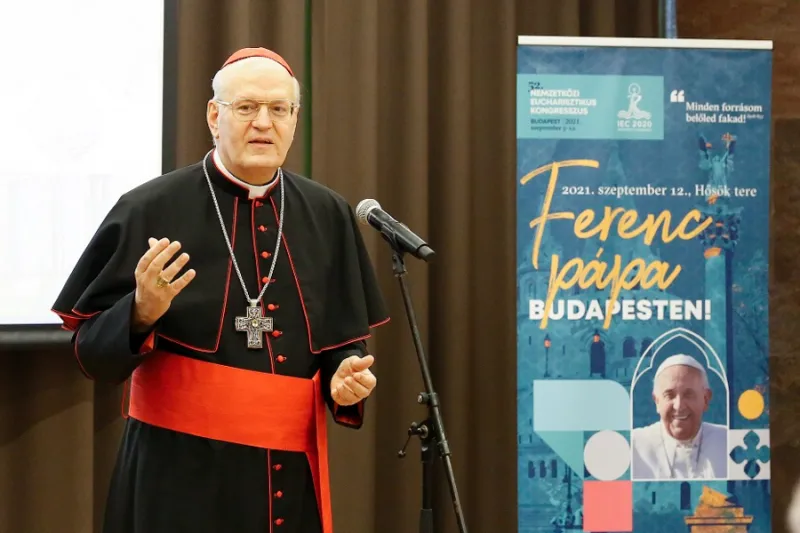
Budapest, Hungary, Jun 15, 2021 / 04:30 am (CNA).
Cardinal Péter Erdő unveiled Monday the official hymn of this year’s International Eucharistic Congress in Budapest.
The Primate of Hungary presented the hymn at a press conference on June 14.
Organizers described the song as a “refreshed version” of a hymn from 1938, the last time that the Hungarian capital hosted the International Eucharistic Congress.
Erdő, the archbishop of Esztergom-Budapest, also introduced a new video featuring the conversion stories of three young people in Budapest.

The 52nd International Eucharistic Congress will take place on Sept. 5-12.
The congress was originally scheduled to take place in 2020 but was postponed to 2021 due to the coronavirus pandemic.
Pope Francis is scheduled to be the principal celebrant of the closing Mass in Heroes’ Square at 11:30 a.m. on Sept. 12.
At the press conference, Erdő also welcomed 12 congress ambassadors, including artists, musicians, singers, and poets, who will offer their witness to the transformative power of the Eucharist.
If you value the news and views Catholic World Report provides, please consider donating to support our efforts. Your contribution will help us continue to make CWR available to all readers worldwide for free, without a subscription. Thank you for your generosity!
Click here for more information on donating to CWR. Click here to sign up for our newsletter.





Leave a Reply